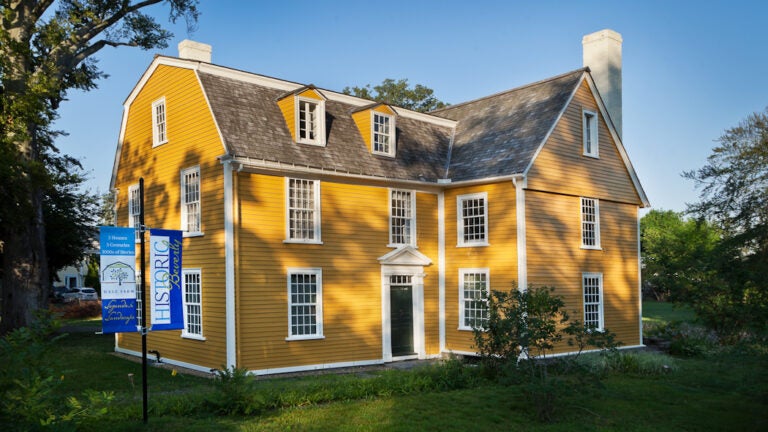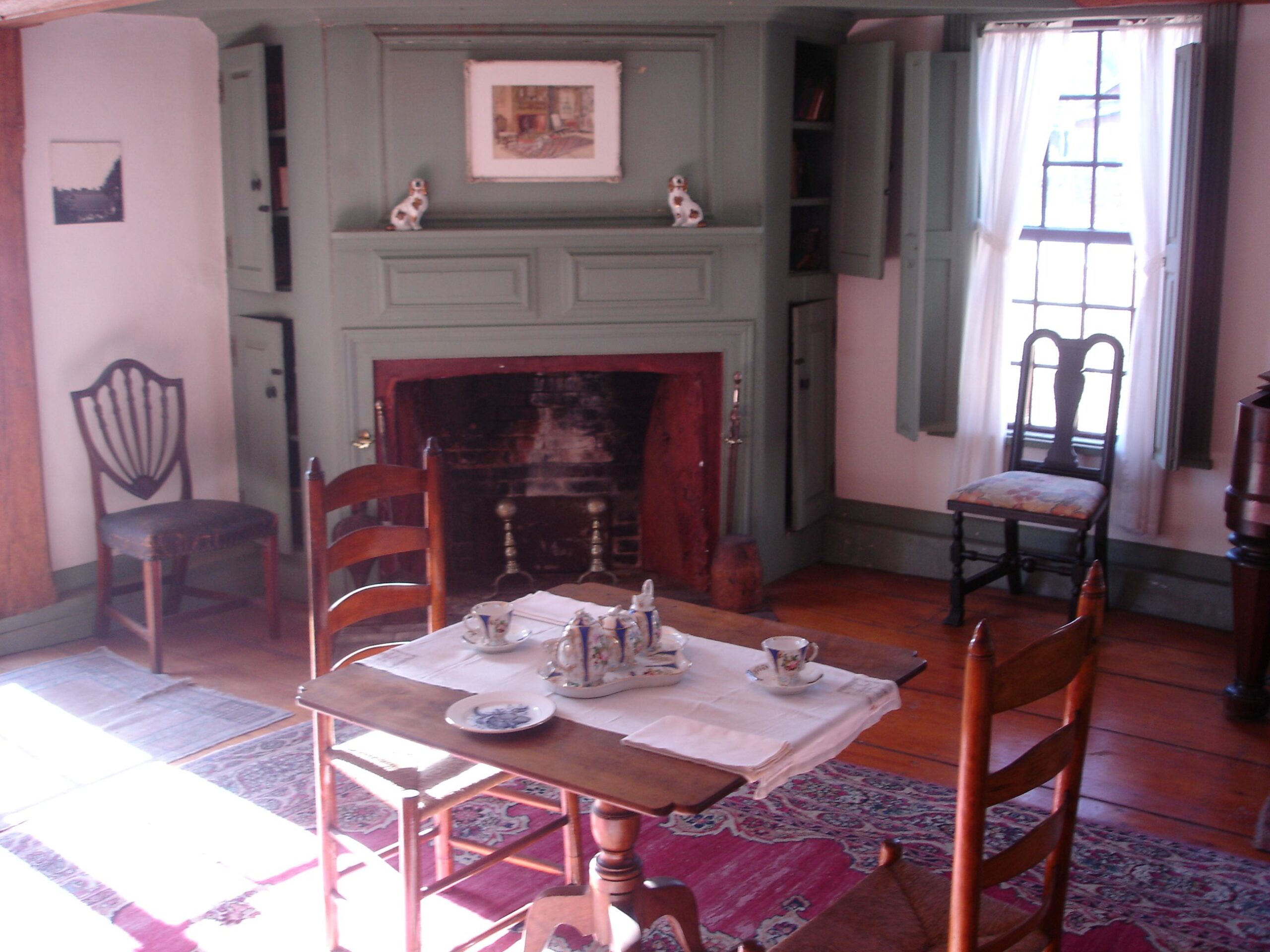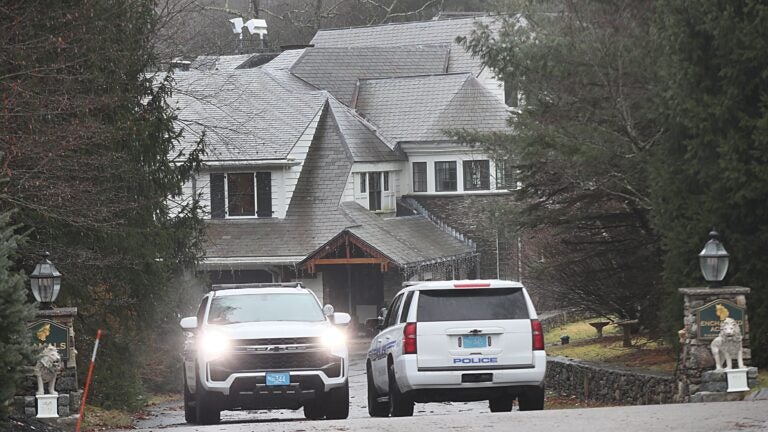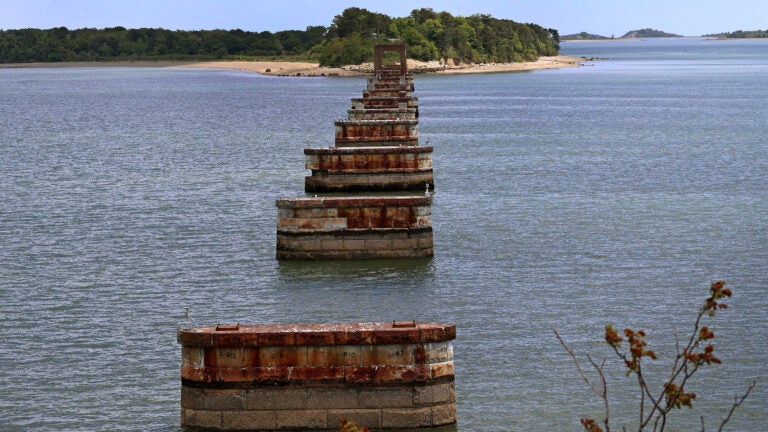Newsletter Signup
Stay up to date on all the latest news from Boston.com

Centuries ago, an eyewitness of the 1692 Salem Witch Trials wrote a book about the experience in his Beverly home where visitors now tour the rooms and peer down at his writing desk.
Rev. John Hale, the pastor at Beverly’s First Parish Church when Beverly was known as the “Bass River Side” of Salem, wrote the book “A Modest Inquiry Into the Nature of Witchcraft” at the 1694 Beverly property, now called Hale Farm.
The historic home on Hale Street is situated on one acre and open seasonally. This summer, tours are available on Fridays, as well as the weekend of Aug. 3-4, and also on Aug. 10 with a beer garden courtesy of Beverly’s Gentile Brewing Company for the Gran Prix of Beverly.
“It’s a beautiful property to just walk around and sit at and enjoy the summer weather because of the pathways,” said Sue Goganian, director of Historic Beverly, which has owned and maintained the home since the family sold it to the organization in 1937.
Visitors can take a guided tour of the house and explore the grounds on their own while following interpretive panels, Goganian said. There is also a handicapped-accessible pathway around the property.
Hale, a Charlestown native and graduate of Harvard, was intimately involved in the Salem Witch Trials, which were a series of prosecutions for witchcraft that resulted in the hanging deaths of 19 men and women.
“As the witchcraft hysteria grew, Hale attended examinations of the afflicted and the accused, prayed with the trial participants, took notes about his experiences, and testified about two of his parishioners. Hale believed in the invisible world, as did ministers of his day, but would come to doubt the proceedings by the end of 1692,” according to the Salem Witch Museum.
Historians say when Hale’s own wife was accused, “who was so far above reproach that she was never in serious danger,” his views changed. Hale’s book was published posthumously in 1702. He died in 1700.
“People were really frightened,” said Goganian. “He was very prominent and very influential and, at the beginning, he supported the trials. His support would have been influential in other people believing it … I am guessing about this, but one of the reasons why he may have published the book was to make up for the fact that he believed this at the beginning.”
Hale’s descendants updated and renovated the property over the next 200-plus years after his death but guests still walk beneath the home’s original beams.
“We do have his writing desk, which is a very small desk that opens up and sits on a table,” said Goganian. “The likelihood is that he would have written the book on that desk. We assume that he probably wrote it in the parlor on the first floor.”

The house was originally comprised of just four rooms, two downstairs and two upstairs. Over the years, the Hales and their descendants transformed the property from a farm into a summer estate, Goganian said, adding staircases, rooms, a new kitchen wing, and servant quarters.
“When John Hale lived there, there was 2 acres,” Goganian said. “We don’t know exactly when the acreage was acquired. Over time, they acquired more acres. At its largest it was close to 100 acres and went all the way to the ocean.”
Guests can tour the parlor, kitchen, Pheasant Room, dining room, and two upstairs bedrooms — an original 17th century bedroom and an 18th century bedroom added later. Visitors can view the original 19th century wallpaper and 18th century fireplaces, she said.
The house is furnished with period items from when the house became a country estate in later years, Goganian said, as most of the family’s actual furniture was sold at auction in 1937. However, the family clock hangs in the Pheasant Room, she said, and a spontoon hangs above the door that belonged to Col. Robert Hale Jr., Hale’s grandson, who was once the sheriff of Essex County.
“There’s power in the real thing and the real place,” said Goganian. “It means something to stand in a room and know that the Reverend John Hale was in that room, that he walked that floor, that he looked out the window, and that he thought about what had just happened in the 17th century in Essex County, about what had happened during the witchcraft era.”
Admission is $5 for adults and children are free. Complimentary craft activities for children are included in admission.
In October, nearby Salem welcomes nearly 1 million visitors for its monthlong Haunted Happenings, which includes events at the Salem Witch Museum and The Witch House (the former home of a Salem Witch Trials judge). In Beverly, Hale Farm has its own special programing, which includes candle-lit tours and spooky tales from Beverly’s past.
Stay up to date on all the latest news from Boston.com





Stay up to date with everything Boston. Receive the latest news and breaking updates, straight from our newsroom to your inbox.
Conversation
This discussion has ended. Please join elsewhere on Boston.com